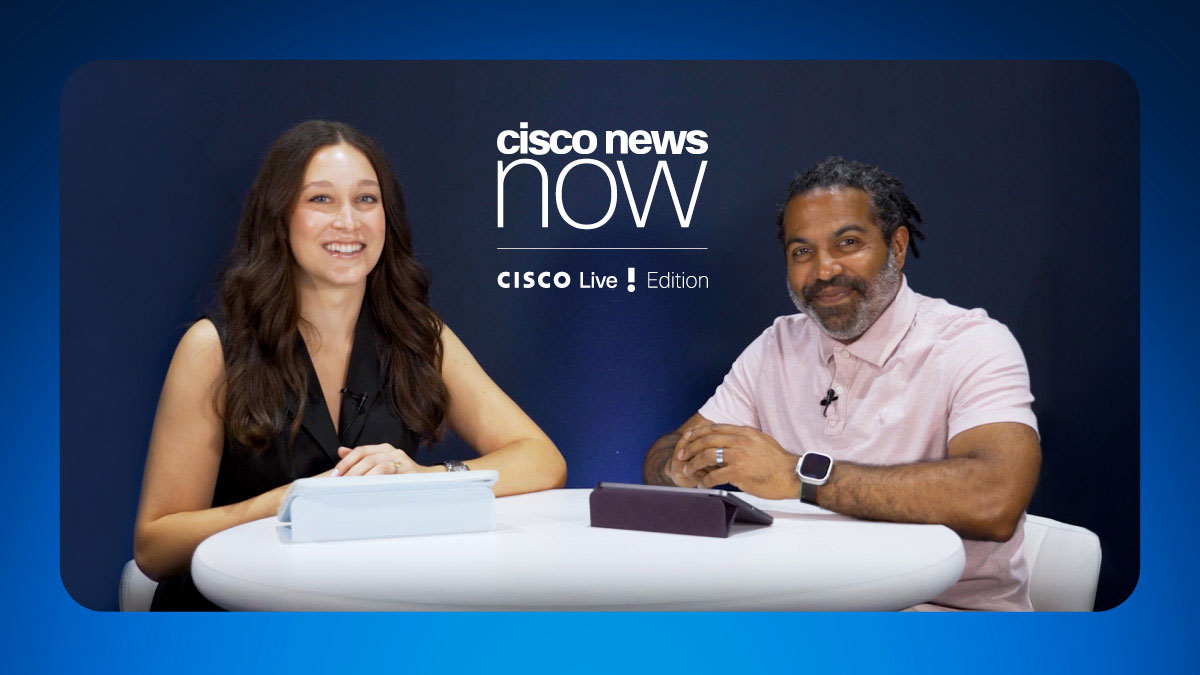SAN JOSE, Calif. -- September 13, 1999 -- Cisco Systems, Inc., today announced Cisco AVVID the Architecture for Voice, Video and Integrated Data for the corporate enterprise. This standards-based flexible architecture enables customers to thrive in Internet-based business models while achieving a lower total cost of ownership for the overall network.
Cisco AVVID signals the availability of New World voice, video and data solutions for the enterprise and is the culmination of Cisco's five phase multiservice strategy which provided a roadmap and vision for converged networks beginning back in 1997.
Cisco AVVID is comprised of four distinct building blocks:
- IP infrastructure systems such as multilayer intelligent switches, routers and gateways with vital network services like quality of service (QoS), security and management
- Call processing platforms and solutions
- New World applications such as unified messaging, new collaborative capabilities, IP contact centers, etc.
- Intelligent IP-enabled clients including IP telephones and software-based phones, video clients, etc.
By deploying the right combination of these products for a converged networking solution, customers will be able to keep pace and stay competitive in an ever-changing business environment.
"Over the past year, Cisco has been executing on its strategy to deliver a data, voice and video system architecture to increase our customers' competitive advantage," said John Chambers, president and CEO of Cisco Systems. "Cisco AVVID is the next step to enable global enterprises to build a flexible, converged network today. By so doing, enterprises will become more agile and will increase their ability to compete in the Internet economy."
In contrast to Old World strategies, Cisco AVVID incorporates technologies, services and products that are available today while maintaining flexibility to accommodate future solutions and products. Cisco AVVID enhances the Internet Ecosystem by building on the established foundation of the Internet where open standards, co-operative development and interoperability with multi-vendor, multi-product solutions are required.
The New World - Network Availability, Open Systems and Lower Total Cost of Ownership
Based on an Internet model, Cisco AVVID relies on a distributed architecture to ensure system availability and scalability. With the trend continuing toward distributed computing, customers are quickly realizing the benefit of having no single point of failure and are able to build as little or as much availability as they need into an integrated solution."As the Internet continues to change global business models, Texas Instruments made the strategic decision to be at the forefront IP telephony deployment because of the reduced operational costs and increased productivity that a converged network can deliver," said Pallab Chatterjee, CIO of Texas Instruments. "What attracted us to Cisco AVVID was its distributed architecture and the scalability of the design which has enabled us to build an open and highly available integrated network today."
Another key element of Cisco AVVID is its open and interoperable nature. This means that customers can choose the best-in-class solution in a number of different areas where previously, they were locked into proprietary applications from a single vendor. As a result, innovation is encouraged and overall networking costs will come down based on market demands and competition.
In a recent study completed by Renaissance World Wide, which examined a number of different business models and total cost of ownership issues, it was concluded that a singular, unified network yields a minimum return on investment of 161% over three years. For more details on this study see http://www.cisco.com/warp/public/779/largeent/tco/
Rapid Deployment of Advanced Applications
One of the primary benefits of a converged network solution is the ability to deploy advanced applications for a competitive advantage while minimizing IT expenses. Through Cisco's open architecture, developers can write next-generation applications on leading development platforms like Windows NT and TAPI, which will ultimately provide customers with a wide range of innovative options."Legacy voice networks are rapidly transforming into an open system for converged data, voice and video communications," said Bill Gates, chairman and CEO of Microsoft Corporation. "We are excited about Cisco AVVID because it represents a standards-based architecture to smoothly migrate customers to the New World of IP telephony. Enterprise customers can now build highly scalable and robust data, voice and video systems based on Cisco's leading IP solutions and Microsoft's proven Windows NT platforms."
In addition to desktop IP telephony solutions, there are a number of emerging applications for large environments that involve Unified Messaging and IP Contact Centers (Internet-based call centers). In this space, Cisco has announced a number of strategic acquisitions like GeoTel and Amteva. By integrating these new technology and products with Cisco's powerful IP solutions, customers can now build out a truly end-to-end system. For more information on Cisco's IP Contact Center, see today's press release entitled, "Cisco Announces IP-based ACD Solution In Conjunction with Cisco AVVID Initiative."
Scalable Infrastructures for Convergence in the Enterprise
Since 1997, Cisco has been executing on its five phase multiservice strategy and has assembled world-class product solutions in the area of voice, video and data as well as developed technologies that allow for intelligent integration and true scalability of these systems. Cisco's technology not only integrates various types of traffic, but also allows for a seamless migration to larger systems. For example, the same technology that is deployed in a small branch can scale up to large global enterprises without having to forklift upgrade the infrastructure.The foundation of the infrastructure component within Cisco AVVID is built on intelligent network services implemented on multiprotocol routers with Cisco IOS. software, multilayer LAN switches and Call processing hardware and software. These devices need to have the QoS, intelligent network services and high performance to support converged applications.
As the industry leader in routing, Cisco has a number of proven, voice and video capable platforms available today. These include a range of solutions with the ability to terminate both Analog and Digital voice interfaces for integration with a legacy PBX or to the Public Switched telephone network (PSTN).
With IP telephony expanding beyond simple toll bypass applications to the desktop, the Cisco Catalyst family of multilayer LAN switches provides the necessary QoS capabilities and scalable bandwidth throughout the LAN to support converged applications. With its proven scalability, intelligent network services and flexible architecture, the Catalyst family will continue to evolve and preserve customers' investments.
Other key infrastructure pieces include new products also announced today: Cisco Call Manager 2.4, two Digital IP Telephony Gateways, Cisco IP telephone sets and a Media Convergence Server. For more information on these new products, please refer to today's press release entitled, "Cisco Ships Complete Enterprise Voice Solution."
Intelligent IP Clients
The third component of the architecture is intelligent client devices, including physical phone sets sitting on a desk, IP enabled wireless phones, pagers, personal digital assistants, and other IP-enabled intelligent agents.Cisco Systems offers various IP telephones that are available today. These devices will evolve to include functionality that is not possible in today's PBX-based systems. Examples include intelligent personal assistants that allows an IP phone to interface with a scheduling application and intelligently route the call to your location or the ability to sort/review messages based upon user-determined preferences rather than just chronological order. Client applications such as directory lookup, single-button collaboration and click to dial are only the beginning of innovations in this area.



